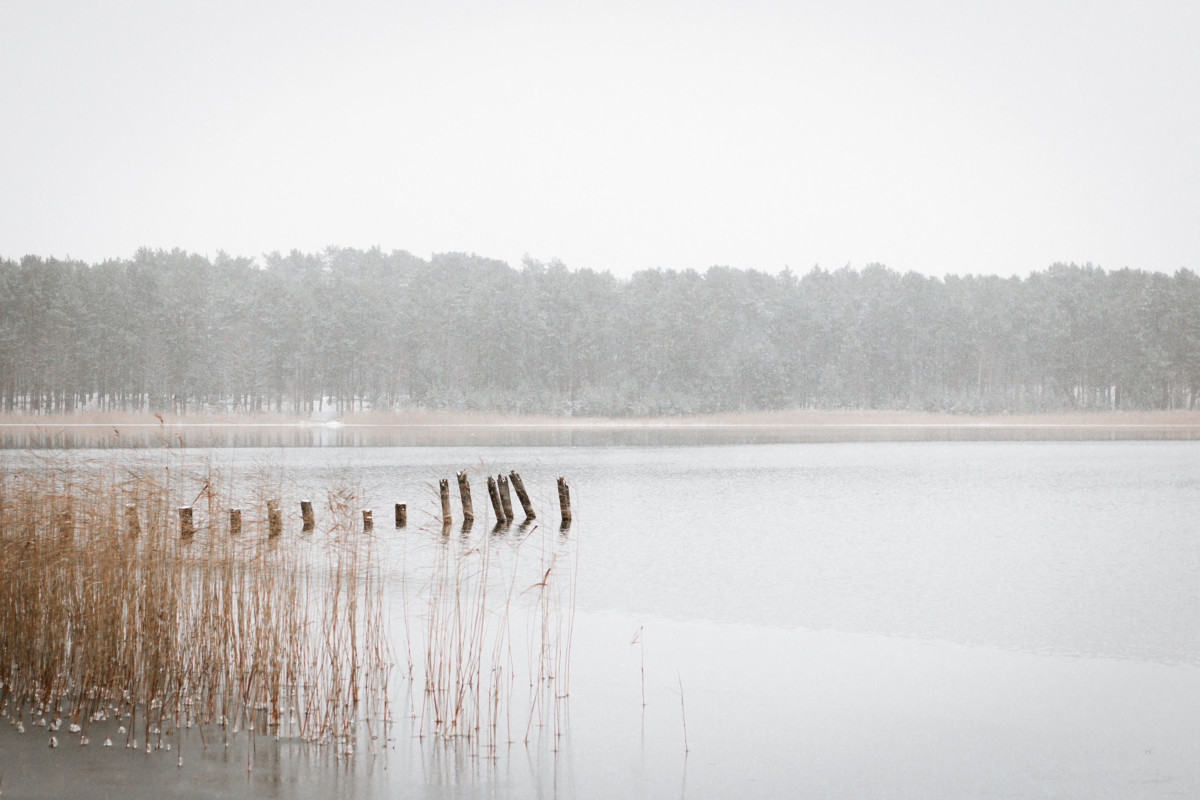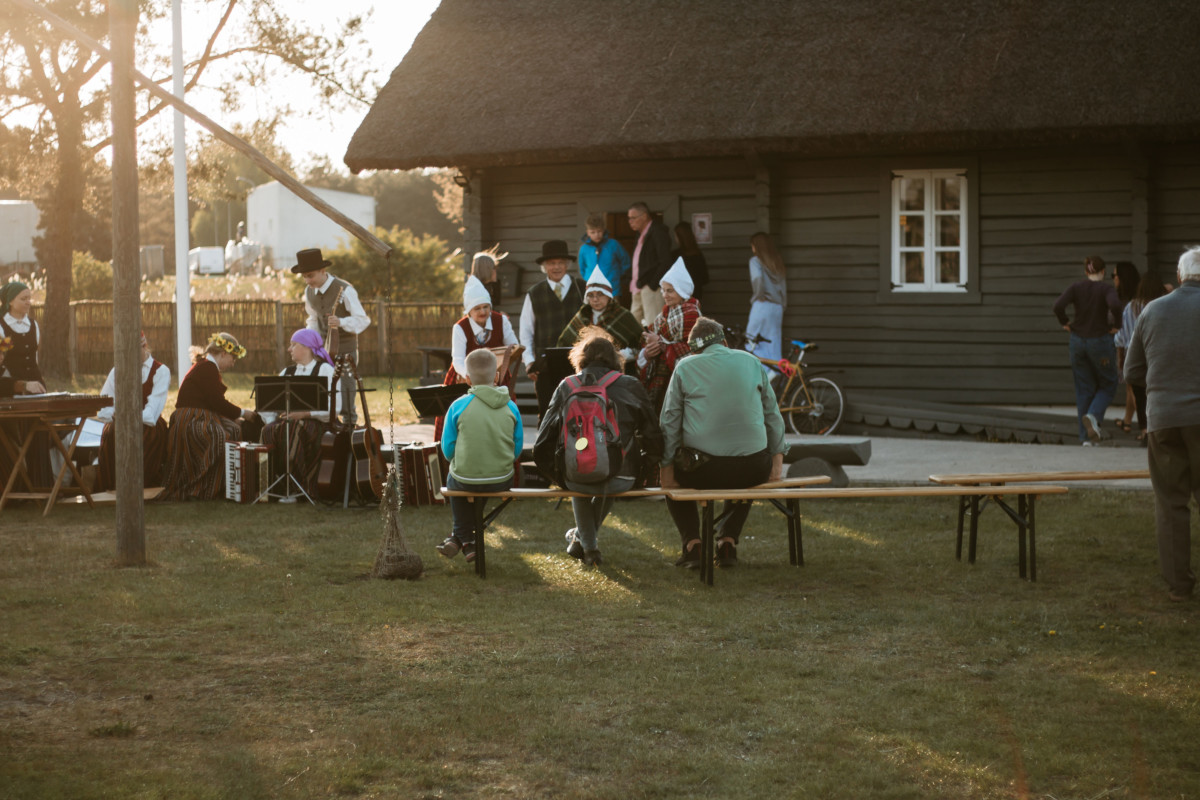Sculpture “Atceroties”
Outstanding Latvian sculptor Vilnis Titāns has made sculpture “Atceroties” (remembering) which is located in Carnikavas Celebration Square near the railway bridge. Sculpture symbolizes not to give up in spite of everything, eternal rise and eternal suggests a further.
It was inaugurated 2011th On November 18, in honor of Latvian national holidays and countryman Wave Clash.
Carnikava manor park
A small hill in Carnikava Park, on top of which a Second World War military cemetery stands today, hosted a magnificent palace of Count Ernst Reinhold von Mengden’s manor estate from the late 18th century to 1917. The designer of the building was the legendary chief architect of the City of Riga and leading master of classical architecture in Latvia, Christoph Haberland. According to accounts of eyewitnesses and local historian J. V. Krauze, it was among the greatest mansions in Vidzeme: it had beautiful paintings, sculptures, moldings, indoor plants, as well as 14 spectacular sandstone columns with ionic capitals in the facade.
The Carnikava Manor palace was burned down in autumn of 1917, during the First World War, with the German Army approaching the area, leaving the park and a column capital as the only nearby witnesses of its former glory. Two remaining capitals can be seen near the stairs of the main building of the University of Latvia and another one in a square near the Small Guild in Riga.
Lake line Garezeri
Lake line Garezeri are unique geological origins and is the only ones in this type of lakes in Vidzeme seaside. Lakes which stretched 3.5 kilometers of territory and includes three narrow (180-220m) line of lakes consists of Northern Garezers, Middle and Southern Garezers.
The longest and deepest of them are middle lake Garezers as it stretches 1.45 km length and depth 2m, while the deeper 4m . Garezers are naturally formed and little overgrown lakes, which has a predominantly dry, sandy or peaty shores.
The walking route along the two longest lakes can go almost 2h (about 10km). We recommend that you choose a path on the seaside. If there is a desire to combine walking with overnight stay is possible to use existing campsites and other accommodations that will take care of meals and night stay. Route can be taken from the railway station “Gauja” and “Lilaste”. We recommend to travel by more environmentally friendly transport, walk in the paths of “goose foot”, use guide service to get to know nature and save natural resources. Nature park Piejūra can be seen through photo cameras, picnic facilities, Nordic walking and cycling opportunities.

Lake Ummis
In 1999, a nature reserve was created to protect Ummja lake and its surroundings, which was transformed into a nature reserve area of the “Piejūra” nature park in 2006. It covers a total of 52 ha and its main conservation value is Ummis. The lake is 25ha in size and its coastline is 2.3km long, while the average depth is 2.9m. Ummis is one of the few lakes in the Baltic States, where a relic of the Atlantic age is still preserved – the floating lake nut.
Since this biotope is so unique not only locally, but also internationally, protective measures have been set for it. In order to protect the sustainable diversity of habitats, swimming in Lake Ummis is prohibited from June 1 to August 15
Other protected biotopes have also chosen this reserve as their home: Dortman’s lobelia (Lobelia dortmanna L), Smooth-spore lake (Isoetes lacustris L), Sting-spore lake (Isoetes echinospora Durieu), etc.
Guide Aleksejs Sergējevs
Offers guided tours in Carnikavas Municipality area. Specialization in village Mežgarciems where visitors can find out more information about military tourism. Guide offers possibility for individuals and groups. It is possible to book local tours, take pictures in uniforms etc. Guided tours can start from train station “Garciems” as well.
Guide services are offered in the following languages: EN, RU, EN.
E-mail: cj-biedriba@inbox.lv (Carnikavas Equestrian Association)

Carnikava Local History Center
Centre building is opened from 19th of October in 2012. The building is shaped like a copy of fisherman house „Cēlāji”, which was built in 1966 and located near the Gauja River crossing place. In 1966 the original building was transferred to the Latvian Ethnographic Open-Air Museum.
In 14th- 17th century, one of the main and oldest roads connected Riga and Pärnu. The road went from the Daugava River crossing the River Gauja in Carnikava and along Lilaste and Salavgrīva arrived in Pärnu. Once there where three river crossing places in the Gauja River. The house owners of „Celāji” did their duties even till 19th century. Today in the Local History Centre you can get to know local history and cultural heritage – the population living and fishing traditions, with it’s permanent exhibition.
Open on Tuesdays , Wednesdays , Thursdays , Fridays 10:00 – 16:00 and Saturdays, Sundays 11:00 – 15:00
In any time visits possible by calling +371 29128086.
Address: Jomas iela 7, Carnikava
Carnikava railway station
Although the Carnikava railway station was opened in 1933, the structure of the station building is approximately 160 years old. This unique gem of wooden architecture was partially transferred from the St. Petersburg-Warsaw railway line, which crosses Latvia between Kārsava in Latgale and the former Zemgale railway station near the Lithuanian border.
Just as the lamprey, the main building of the railway station has become a symbol of this town. Carnikava, the railway line and lampreys have had something in common for a long time. In the 1930s, when special tourist trains became fashionable, lamprey tasting was also included in the Limbaži direction’s excursion offer. An item from the collection of the Latvian Railway History Museum – a, somehow, unused ticket – proves this.
Gauja estuary
In the history of Carnikava, Gauja is mentioned as an important place for sailors. At the time when the Libyans called Carnikava as “Sarnikau”, the Germans called it “Koivemundi” (mouth of the river), highlighting the mouth of Gauja. Carnikava was originally formed as a fishing village, where the Gauja River with its outlet into the sea served as a significant source of income for fishermen, especially lamprey fishing increased the wealth of the former Carnikava manor. In the past, trees were floated along the Gauja, thus it became an important waterway. Gauja is Latvia’s longest river (452 km), and it begins its journey in the Vidzeme highlands, but ends by meeting the sea near us in Carnikava.
It is in Ādaži municipality, near Carnikava, that the Gauja, Latvia’s longest river, meets the Gulf of Riga. The mouth of the Gauja is unique, it can enchant anyone, so we recommend visiting it by boat “Sarnikau” or one of the wooden boats “Sandra” or “Evelīna”.
https://www.carnikavaskugitis.lv/
https://www.carnikavaskokakuteri.lv/
It is possible to observe more than 232 species of birds in the coastal nature park “Piejūra” located in Carnikava parish, especially in the territory of the left bank of the Gauja, including the Gauja mouth.
ATTENTION: In order to restore the former population of small terns in the mouth of the Gauja River, the Nature Protection Board will close the mouth of the Gauja River to visitors again from May 1 to July 31 this year. During this period, people are invited to choose other recreation areas and routes for rest and walks on the beach.
